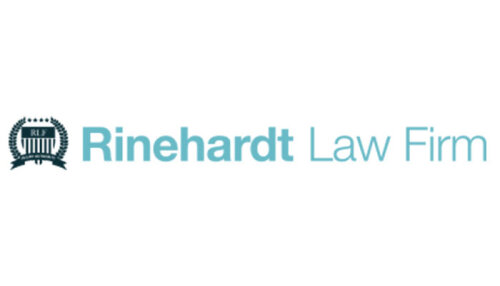Best Workers Compensation Lawyers in Ontario
Share your needs with us, get contacted by law firms.
Free. Takes 2 min.
List of the best lawyers in Ontario, United States
1. About Workers Compensation Law in Ontario, Canada
Ontario operates its workers compensation system under the Workplace Safety and Insurance Act, 1997 (WSIA). The system is administered by the Workplace Safety and Insurance Board (WSIB). Its purpose is to provide wage replacement, medical treatment, and other supports to workers who are injured or become ill due to work, without requiring litigation against the employer.
Benefits are funded by employer premiums and administered through a no-fault scheme. Most employees in Ontario fall under WSIB coverage, while some workers may have alternative coverage or exemptions depending on their employment status. If you disagree with a WSIB decision, you can appeal to the Workplace Safety and Insurance Appeals Tribunal (WSIAT).
WSIB processes claims, supports medical care, and helps injured workers return to work where possible. The related appeals process through WSIAT provides a forum to challenge denials, benefit reductions, or other determinations. For authoritative details, see WSIB’s overview and Ontario’s government resources on workers compensation and safety.
Ontario's workers compensation system is designed to provide timely income support and medical care to workers injured on the job while promoting safe workplaces.
Key sources you may consult include the WSIB official site and the Ontario government pages on workers safety and compensation. For the most current rules and forms, always refer to these official sites.
WSIB - Workplace Safety and Insurance Board - official site with claim guidelines, benefits, and return-to-work programs.
Ontario e-Laws - WSIA - the governing statute for Ontario workers compensation law.
2. Why You May Need a Lawyer
Legal counsel can help you navigate complex deadlines, forms, and decisions that directly affect your benefits and coverage. Below are concrete, real-world scenarios where hiring a lawyer is often essential in Ontario.
- Claim denial after a workplace injury with limited medical documentation. A lawyer can build a stronger case, gather missing medical records, and present arguments for eligibility to receive wage replacement and medical benefits.
- Benefits reduced or terminated after an initial approval. A legal professional can challenge the reduction, assemble evidence of ongoing disability, and pursue reinstatement or compensation adjustments through the WSIB or WSIAT.
- Disputed impairment ratings or lost earnings due to partial return-to-work arrangements. An attorney can review vocational evidence, doctor opinions, and wage records to maximize appropriate benefits.
- Employer misclassification or coverage disputes for independent contractors. A lawyer can assess whether your role qualifies within WSIA coverage and pursue appropriate remedies if coverage is missing or misapplied.
- Delays in processing or delays in medical treatment funding. A solicitor can file timely requests for reconsideration or escalation and ensure due process is followed.
- Appealing a WSIB decision to the Workplace Safety and Insurance Appeals Tribunal (WSIAT). Legal counsel can prepare and present an appeal package, navigate evidence rules, and advocate for favorable outcomes.
In Ontario, speaking with a qualified solicitor or attorney who practices workers' compensation law can save time and reduce stress by ensuring you meet deadlines and submit strong evidence. It also helps to have documentation reviewed by someone familiar with WSIA rules and WSIAT procedures.
3. Local Laws Overview
Ontario’s workers compensation framework rests primarily on the WSIA and related regulations, supplemented by occupational safety laws. The following are foundational statutes and regulations you should know.
- Workplace Safety and Insurance Act, 1997 (WSIA) - This is the core statute governing how benefits are provided, how premiums are assessed, and how disputes are handled. The WSIA provides the framework for wage loss, medical care, and return-to-work supports. The statute and amendments are maintained on official Ontario resources: Ontario e-Laws - WSIA.
- Occupational Health and Safety Act (OHSA) - OHSA sets the general duties to protect workers and outlines the safety standards employers must meet. It interacts with the compensation system by shaping workplace safety practices that can affect injury outcomes and claim eligibility. See the official OHSA statute page: Ontario e-Laws - OHSA.
- Statutory Accident Benefits Schedule (SABS) under the WSIA - SABS outlines the specific benefits available for non-catastrophic injuries and how wage replacement and medical benefits are determined. The SABS is a regulation within the WSIA framework and is referenced in Ontario’s official materials.
Recent updates to WSIA and related regulations are published by the Ontario government and WSIB. To ensure you have current information, consult WSIB updates, statutory changes on Ontario’s e-Laws, and the WSIAT guidance.
Ontario's WSIA and OHSA work together to support workers while ensuring safe workplaces and timely access to benefits.
WSIB and WSIA are the best starting points for specific rights, benefits and procedures.
4. Frequently Asked Questions
What is the Ontario workers compensation system and who pays?
Ontario’s system provides wage replacement and medical care to workers injured on the job. Employers pay premiums to WSIB to fund these benefits.
How do I file a WSIB claim after a workplace injury?
Notify your employer in writing as soon as possible, then submit a claim with WSIB online or by submitting forms through your employer or physician.
Do I need a solicitor to handle a WSIB claim?
Not always, but a lawyer can improve accuracy, timing, and strategy, especially if the claim is denied or involves complex issues.
How long does a WSIB claim typically take to resolve?
Processing times vary by case complexity. Simple claims may resolve in weeks, while disputes or appeals can take months.
What is the Workplace Safety and Insurance Appeals Tribunal (WSIAT)?
WSIAT is the tribunal that hears appeals of WSIB decisions. It reviews evidence and renders binding decisions.
How much do workers' compensation lawyers cost in Ontario?
Many lawyers offer initial consultations for free. Fees are often contingent on outcome or paid from any recoveries; discuss costs upfront.
Can I receive wage replacement while I am off work due to injury?
Yes, if your WSIB claim is accepted, you may receive wage replacement benefits while you are unable to work.
Do independent contractors have WSIB coverage in Ontario?
Coverage depends on the worker's status and whether they meet WSIB eligibility as a worker. Some contractors may need to seek alternative coverage.
Is compensation available for mental health injuries from work in Ontario?
Ontario provides benefits for certain workplace-related mental health injuries under WSIA, but eligibility depends on medical evidence and worker status.
What is the process to appeal a WSIB decision to WSIAT?
File a request for reconsideration or a direct appeal with the tribunal within the timeline specified by WSIA rules; an attorney can help prepare.
What information should I gather for a WSIB claim?
Collect injury date, employer details, medical records, doctor notes, witness statements, and any correspondence with WSIB or your employer.
What is the Statutory Accident Benefits Schedule (SABS)?
SABS defines the specific benefits for non-catastrophic injuries, including wage loss, medical care, and rehabilitation support under WSIA.
5. Additional Resources
- WSIB - Official agency that administers workers compensation benefits in Ontario, including claims processing, medical coverage, and return-to-work programs. https://www.wsib.ca
- Ontario Ministry of Labour, Immigration, Training and Skills Development - Government department that oversees workplace safety and related regulations under OHSA and supports workers rights. https://www.ontario.ca/page/ministry-labour-immigration-training-skills-development
- Workplace Safety and Insurance Appeals Tribunal (WSIAT) - Independent tribunal that hears appeals from WSIB decisions. https://www.wsiat.on.ca
6. Next Steps
- Confirm your injury or illness qualifies under WSIA and gather your initial documentation. Start with medical notes, accident details, and your employer contact.
- Notify your employer in writing and file a WSIB claim promptly via the WSIB portal or your employer’s claims process. Keep copies for your records.
- Schedule an initial consultation with 2-3 lawyers who practice Ontario workers compensation law. Bring all claim documents and ask about experience with WSIAT appeals.
- Ask each solicitor about fees, possible recoverable costs, and whether they offer a contingency plan or fixed-fee arrangements for your case. Note any potential costs you could incur.
- If WSIB denies or reduces benefits, evaluate an appeal to WSIAT with your lawyer. Prepare a timeline and gather medical and vocational evidence to support your position.
- Collect ongoing medical records and work accommodation notes. Maintain a clear timeline of injuries, visits, and communications with WSIB or your employer.
- Make a decision on representation based on clarity, communication, and confidence in the attorney’s strategy for your WSIAT appeal or claims review.
Lawzana helps you find the best lawyers and law firms in Ontario through a curated and pre-screened list of qualified legal professionals. Our platform offers rankings and detailed profiles of attorneys and law firms, allowing you to compare based on practice areas, including Workers Compensation, experience, and client feedback.
Each profile includes a description of the firm's areas of practice, client reviews, team members and partners, year of establishment, spoken languages, office locations, contact information, social media presence, and any published articles or resources. Most firms on our platform speak English and are experienced in both local and international legal matters.
Get a quote from top-rated law firms in Ontario, United States — quickly, securely, and without unnecessary hassle.
Disclaimer:
The information provided on this page is for general informational purposes only and does not constitute legal advice. While we strive to ensure the accuracy and relevance of the content, legal information may change over time, and interpretations of the law can vary. You should always consult with a qualified legal professional for advice specific to your situation.
We disclaim all liability for actions taken or not taken based on the content of this page. If you believe any information is incorrect or outdated, please contact us, and we will review and update it where appropriate.









